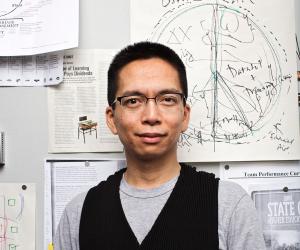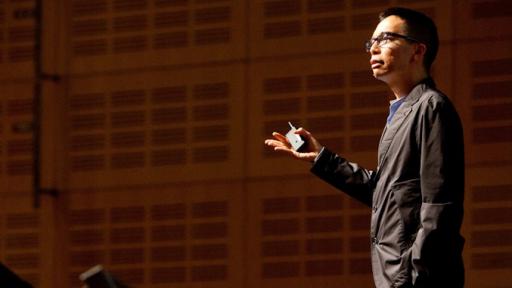John Maeda is a leader who integrates technology, design and leadership into a 21st -century synthesis of creativity and innovation. His focus is on imagining how design and technology can bring clarity to leadership in the era of social media.
Maeda kicks off his talk with a question on why anyone would try to do something hard?
Why would you try to do anything hard in a world where doing what is easier is better and more cost-efficient? When you think of people who are being creative, I don’t think they are trying to do it the hard way; they're trying to do it the right way. And the right way has integrity, and integrity leads to great discovery, he explains.
He tells of a book Orbiting the Giant Hairball that influenced his view on leadership. Author Gordon MacKenzie compares the traditional hierarchical organisation structure of a pyramid with an alternative structure in the shape of a plum tree. Unlike the pyramid where only the top leaders have a clear view of the future, the plum tree structure sees leaders supporting doers, who produce the work, like a trunk would support a tree. While a simplistic analogy, this had a significant impact on Maeda thinking around leader and organisational structures.
Maeda also shows how social media and access to information have undermined traditional hierarchy, shifting it to a heterarchy. This however results in a chaotic environment and Maeda asks how we can bring design into this space to help us function more effectively.
A key fact about art and design is this: The reason that you have the ability to make creative leaps is because the risk is so low. If you think about it, it poses no threat to your health and safety and as a result the creative endeavour is often marginalised. But this is also powerful because it is in these kinds of languages of expression where risk is low that I’ve seen designers and artists iterate at a very rapid rate. It is a developed skill and this ability to iterate, this ability to be agile, is becoming increasingly important.
He also goes on to talk about how design is sometimes its own worst enemy in what he terms the ‘design thinking paradox’: “Design as a discipline is not well designed to be understood. Part of this challenge is to communicate about what design is.”
He shows an example of Florence Nightingale who according to him is one of the first data scientists. She used an infographic to plot and make visible the amount of soldiers who died in hospitals in relation to those who died on the battlefield. She used this design as a way to advocate for improved sanitary conditions in hospitals.
Design is most powerful when it tells a story about something that matters, in a voice that matters, says Maeda.
He ends the talk by revisiting the organisation structure and advocates for thinking of it as an octopus. Despite its tiny brain, an octopus is one of the few organism shown to have the ability to plan and whose eight tentacles have the ability to act on their own, making it a good example of a smart, cooperative and trusting organisational structure.
John Maeda, who served as the president of the Rhode Island School of Design from 2008, announced at the end of 2013 that he will become a design partner at Kleiner Perkins Caufield & Byers starting from January 2014. He will also be chairing eBay Inc.'s Design Advisory Board.









